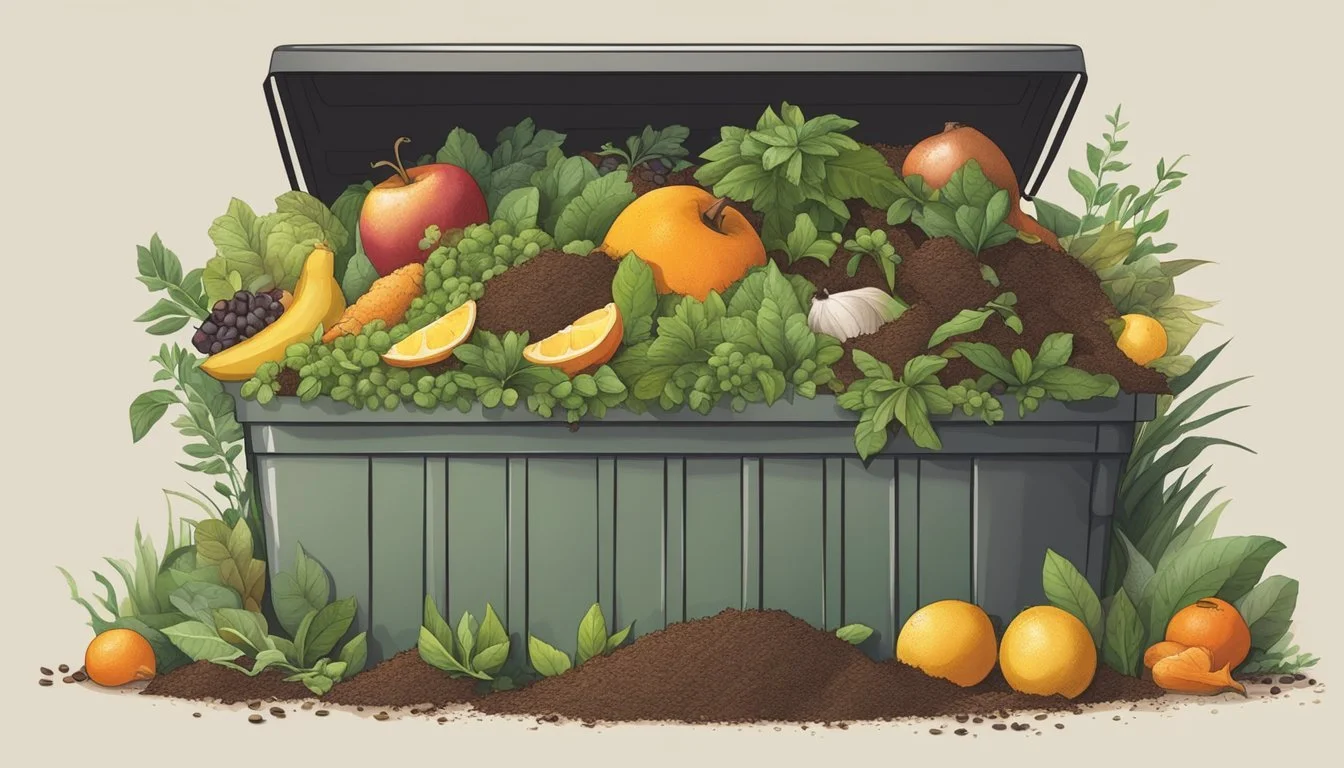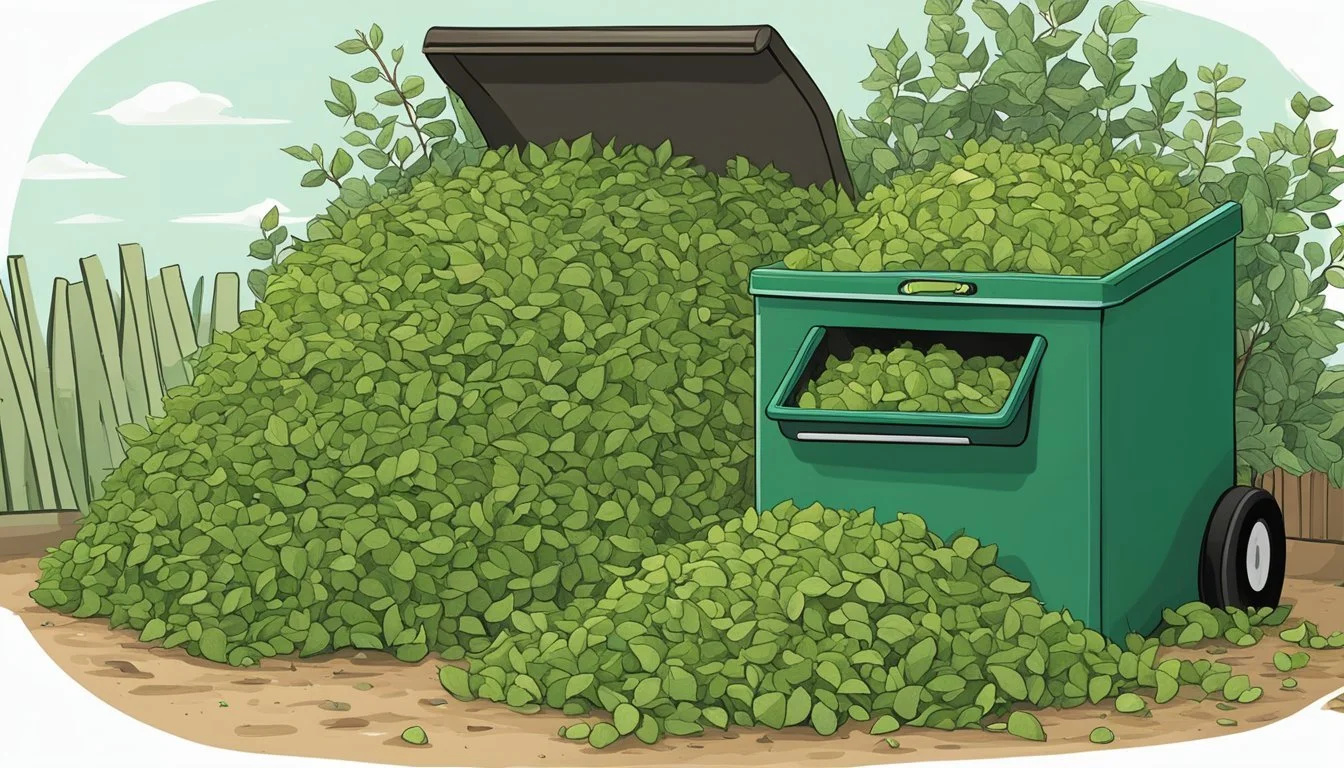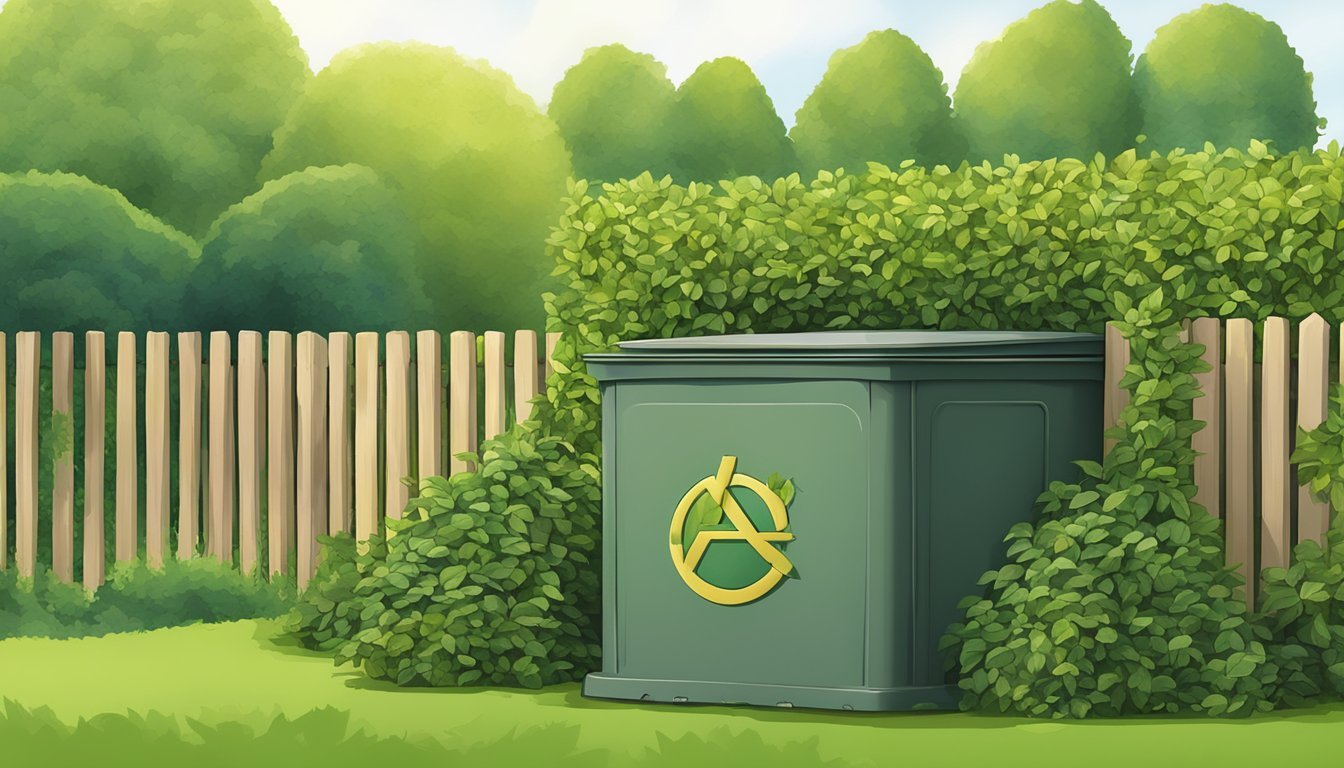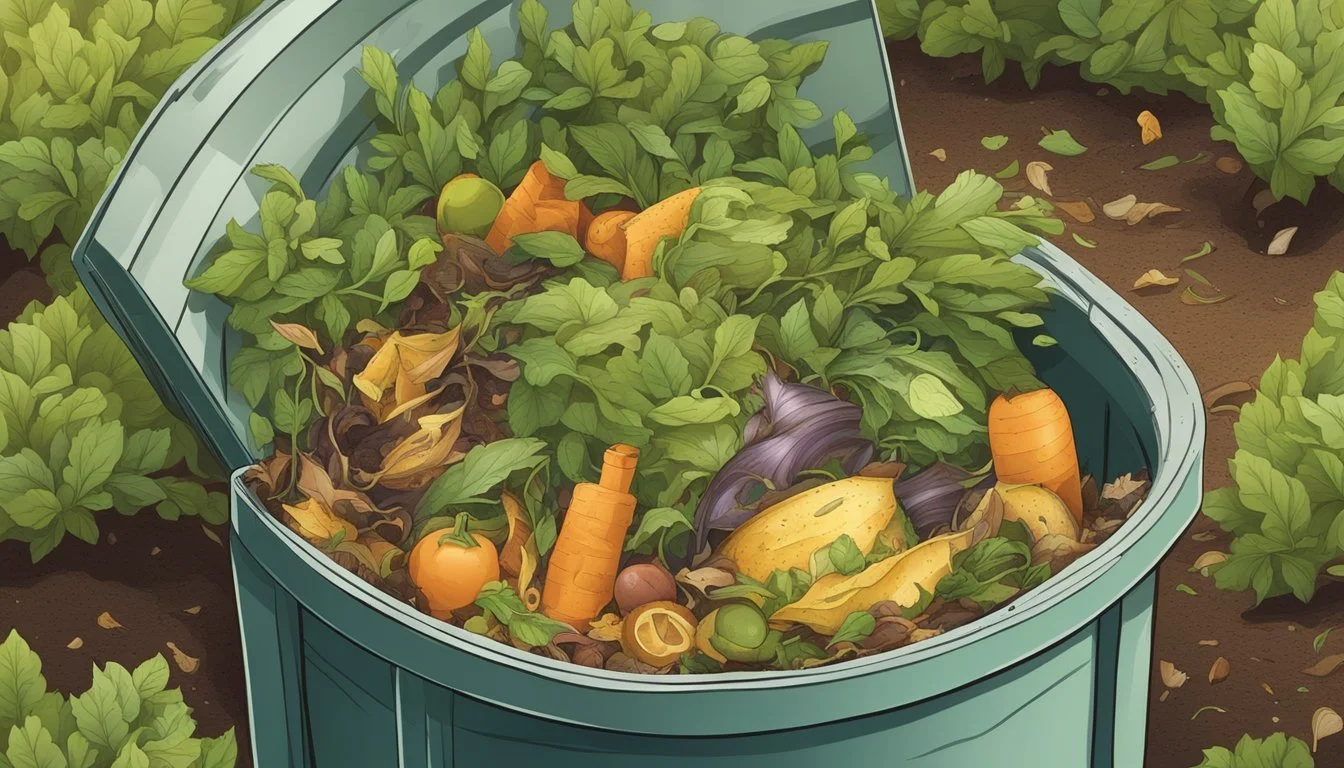Can You Compost Hedge Trimmings?
Understanding Garden Waste Recycling
Hedge trimmings are a common byproduct of garden maintenance, and many gardeners are left wondering whether these cuttings can be put to good use. The good news is that hedge trimmings can indeed be composted. Composting is an excellent way to recycle organic garden waste and turn it into nutrient-rich soil conditioner for plants.
When adding hedge trimmings to a compost bin or heap, size is an essential factor to consider. Smaller clippings with a diameter of 1cm or less can be added directly, as their size allows for quicker decomposition. For a compost system that is already functioning effectively and contains a diverse mix of organic matter, slightly larger clippings up to 1.5cm in diameter can also be accommodated. However, larger branches should be shredded or chipped to speed up the composting process and encourage even breakdown.
Incorporating hedge trimmings into a compost heap contributes to a balanced blend of green (nitrogen-rich) and brown (carbon-rich) materials, which is crucial for successful composting. The presence of both green and brown materials ensures that the compost heap remains aerated, while also providing microorganisms with the necessary ingredients to thrive and decompose organic matter efficiently. As a result, gardeners can transform their hedge trimmings into valuable compost that will enhance the health and vitality of their gardens.
Understanding Composting Basics
Composting is the biological process where microorganisms, including bacteria and fungi, break down organic matter into simpler substances. A successful composting system relies on balancing carbon-rich materials, which provide energy, and nitrogen-rich materials, which furnish proteins for the microorganisms.
Key components for effective composting include:
Organic Matter: Materials such as leaves, fruit peels, and hedge trimmings are added to the compost bin.
Aeration: Regularly turning the compost ensures adequate air circulation, which is necessary for aerobic decomposing processes.
Moisture: The pile should be as moist as a wrung-out sponge to facilitate decomposition without causing odor issues.
Microorganisms: Bacteria, fungi, and other organisms are the workhorses of composting, converting materials into rich compost.
The ratios of carbon to nitrogen, known as the C ratio, should ideally be 30:1. High carbon materials (browns) include dried leaves and twigs, while high nitrogen materials (greens) consist of kitchen scraps and lawn clippings.
The composting process is a type of recycling that transforms organic materials into a valuable fertilizer, enriching soil and providing nutrients for plant growth. A well-managed compost bin minimizes disease risk by maintaining temperatures that deter harmful pathogens and pests.
Proper composting also involves monitoring for undesirable odors, which typically indicate an imbalance in the pile. Factors such as excess moisture, lack of aeration, or too much nitrogen can lead to unpleasant smells, indicating that the compost requires attention.
In summary, composting is a controlled and purposeful form of organic decomposition that contributes to soil health and waste reduction. It requires attention to detail regarding the balance of materials and conditions within the compost bin.
Necessary Ingredients for Composting
Successful composting relies on a good balance of materials that provide carbon and nitrogen, both crucial in the decomposition process.
Greens and Browns
Greens are nitrogen-rich ingredients essential for composting. They act as a protein source for the microbes that break down the waste. Examples of greens include:
Kitchen waste: Vegetable scraps, coffee grounds
Garden waste: Grass clippings, green leaves, and weeds
Browns are carbon-rich materials and serve as an energy source for the decomposition process. Examples of browns include:
Dry leaves
Twigs
Straw
Cardboard
Balancing Carbon and Nitrogen
The key to efficient composting is maintaining the right ratio of carbon (browns) to nitrogen (greens). A common guideline is to aim for a ratio of about 30:1, carbon to nitrogen. Here's a brief overview:
Carbon-rich materials (
Browns): Provide aeration and structure. Include materials like straw and twigs.Nitrogen-rich materials (
Greens): Accelerate the composting process. These are often moist and include items such as manure and vegetable scraps.
The correct balance helps to prevent odors and creates an environment conducive to the growth of beneficial microorganisms that break down organic matter into nutrient-rich compost.
The Role of Hedge Trimmings in Composting
Hedge trimmings play a valuable role in the composting process, contributing to the carbon to nitrogen balance necessary for effective decomposition. Hedge trimmings, which consist of leaves and woody stems, serve both as green waste and a carbon-rich brown element within compost heaps.
Suitability of Hedge Trimmings
Hedge trimmings are typically suitable for composting, particularly when they are of the appropriate size. The ideal diameter for hedge trimmings in compost is generally 1cm or less. These smaller trimmings decompose at a rate consistent with other organic materials. Larger stems, especially those with diameters between 1cm and 4cm, should be broken down further to enhance decomposition rates.
<1cm: Suitable for direct addition to compost
1cm - 4cm: Requires shredding for effective composting
Preparation of Trimmings for Composting
Proper preparation of hedge trimmings can significantly expedite their breakdown in the compost pile. Composting benefits from a mix of green waste like hedge trimmings, which increase the nitrogen content, and brown waste, such as mulch, which provides carbon.
Shredding: Larger trimmings should be shredded to increase surface area.
Layering: To maintain a healthy compost pile, alternate layers of green and brown waste.
Moistening: Ensure trimmings are kept moist to facilitate decomposition.
In addition to aiding compost health, hedge trimmings can also protect and feed soil ecosystems when used as mulch. Their application as mulch can conserve soil moisture, regulate temperature, and gradually release nutrients as they break down.
Building and Maintaining Your Compost Heap
Constructing a compost heap is integral to recycling garden waste such as hedge trimmings into nutrient-rich soil. Proper attention to the construction and maintenance of the compost heap ensures efficient breakdown of materials.
Constructing the Compost Bin
To construct a compost bin, one can use materials such as pallets, fencing, blocks, or commercially available bins. An effective compost bin should be open to the soil beneath to allow for drainage and access by soil organisms. A sturdy structure can be built using chicken wire, welded wire, or solid wood to contain the compost while allowing for aeration. It's essential to ensure that the bin has enough space to accommodate both air and moisture, which are crucial for the composting process.
Materials Needed:
Pallets
Fencing materials
Concrete blocks
Wire (chicken or welded)
Steps for Construction:
Choose a level area in direct contact with the ground.
Construct a cubic frame using your chosen materials. Aim for at least 3 feet in height, width, and depth.
Secure the structure on all sides, leaving the front accessible for turning the heap.
Optimizing Conditions for Decomposition
The rate at which compost decomposes is greatly influenced by factors such as temperature, aeration, and moisture. For optimal decomposition, the compost heap should be kept moist like a wrung-out sponge and turned regularly to introduce air and distribute heat evenly.
Requirements for Optimal Decomposition:
Maintain a moist environment.
Regularly turn the heap to enhance aeration.
Track the heat generated within the heap to monitor microbial activity.
Maintaining the Heap:
Check the moisture level weekly and add water if it feels dry.
Turn the heap every few weeks to aerate the pile. This can be done with a garden fork or a specialized compost aerator.
Cover the heap with a tarp or wood to retain heat and moisture if necessary.
By carefully constructing and maintaining a compost bin, gardeners can effectively accelerate the decomposition of hedge trimmings, converting them into a valuable resource for the garden.
Troubleshooting Common Composting Issues
When composting hedge trimmings, two frequent concerns involve controlling pests and odors, and balancing moisture and aeration to maintain a healthy composting process.
Dealing With Pests and Odor
Pests: Pests are attracted to compost heaps that contain food scraps or other decomposing organic matter. To prevent pests:
Ensure a proper balance between green (nitrogen-rich) and brown (carbon-rich) materials.
Avoid adding meat, dairy, or oily substances that can attract rodents and insects.
Cover fresh additions with dry materials or soil to deter flies.
Odor: Odors can indicate an imbalance in the compost. To minimize odors:
Turn the heap regularly to enhance air circulation and encourage aerobic decomposition.
Confirm that the compost has enough brown materials to absorb excess moisture and suppress smell.
If the heap is too dry, it impedes microorganism activity, which can also cause odor; add water to keep the pile moist but not soggy.
Adjusting Moisture and Aeration
Moisture: Moisture is critical; too much or too little can slow down the composting process. To adjust moisture:
If the heap is too wet, add more brown materials, and turn the pile to allow excess water to evaporate.
If it's too dry, moisten with water using a hose or water source but be careful not to overwater.
Aeration: Proper air flow is required for microorganisms and fungi to thrive and break down organic matter.
Regularly turn the compost heap to incorporate air and help maintain the right temperature.
Consider the use of a compost bin with built-in ventilation or create air pockets by incorporating bulky materials like small branches.
Benefits of Composting with Hedge Trimmings
Composting hedge trimmings can offer several advantages to gardeners seeking to enrich their soil. Hedge clippings serve as organic materials that decompose over time, releasing nutrients back into the soil. This process converts waste into a valuable fertilizer, creating nutrient-rich soil that benefits plant growth.
Soil Structure Improvement: Incorporating hedge trimmings into compost can enhance the soil's structure, increasing aeration and improving drainage.
Nutrient Recycling: They provide a source of carbon, an essential element in the composting process, facilitating the recycling of nutrients.
Natural Fertilizer: The resulting compost acts as a natural fertilizer, supplying plants with essential nutrients and reducing the need for chemical alternatives.
Waste Reduction: Composting hedge clippings minimizes organic waste, contributing to a more sustainable gardening practice.
The composting process also helps in heating up the pile, which accelerates decomposition and kills off weeds and seeds that might be present in the clippings. Furthermore, such composting supports local wildlife, as it can create habitats for beneficial insects and microorganisms within the garden ecosystem.
Gardeners should, however, be mindful of the size of the hedge trimmings; smaller clippings decompose faster. Larger, woodier cuttings may require pre-shredding or may take longer to break down. Properly managed, hedge trimmings can be an excellent addition to a gardener's composting strategy, contributing to a more vigorous and healthful garden.
Avoiding Inappropriate Materials in Compost
When composting hedge trimmings, it's crucial to avoid adding certain materials that can contaminate the compost pile or attract pests. Keeping these harmful substances out of compost ensures a healthy decomposition process.
Non-Compostable Substances
Some materials should never be placed in compost bins as they do not break down easily and can cause more harm than benefit:
Meat: Attracts pests and can create foul odors.
Fat: Similar to meat, it can attract unwanted animals and does not decompose well.
Dairy products: Can lead to odors and pest attraction.
Bones: Take a very long time to decompose and can attract animals.
Plastic: Does not break down in a compost pile and poses environmental risks.
Risk of Disease and Contamination
Introducing certain items to compost piles can increase the risk of disease and chemical contamination:
Diseased plants: Can spread pathogens to the compost and subsequently to the garden.
Pesticide-treated plants: Chemicals on the plants can survive the composting process and contaminate the finished compost.
By meticulously avoiding the incorporation of these materials in compost bins, composters can achieve a rich and productive soil amendment that is safe for gardens and the environment.
Composting Methods
Choosing the right composting method for hedge trimmings can significantly affect the efficiency and quality of the resulting compost. Two primary considerations are heat generation and oxygen exposure, which determine the speed and quality of decomposition.
Hot vs. Cold Composting
Hot Composting:
Requires a balance of green (nitrogen-rich) and brown (carbon-rich) materials, water, and air.
Pros: Fast decomposition, can kill weed seeds and pathogens.
Cons: Needs regular maintenance to maintain temperatures between 110°F-160°F (43°C-71°C).
Best for: Someone who wants to produce compost quickly and is willing to actively manage the compost heap.
Cold Composting:
Involves less maintenance, simply layering green and brown materials and letting them break down over time.
Pros: Requires less effort, suitable for a more casual approach.
Cons: Slower process, can take a year or more, and may not kill weeds or diseases.
Best for: Individuals with patience and minimal time to devote to managing their compost.
Aerobic vs. Anaerobic Composting
Aerobic Composting:
Relies heavily on oxygen, which is introduced through turning or agitation.
Pros: Faster decomposition, produces less odor, generates beneficial heat.
Cons: Requires more physical work to aerate the pile.
Best Situation: In an open system such as a compost heap or bin with ample ventilation or in full sun to enhance microbial activity and heating.
Anaerobic Composting:
Occurs in the absence of oxygen, often in a closed system.
Pros: Less effort since it doesn't need turning, can be suitable for wet climates.
Cons: Decomposes slowly, may produce unpleasant odors.
Best Situation: For hedge trimmings that are incorporated into lower layers of a compost pile with a mix of other organic matter that won't be disturbed often.
Compost Utilization
Utilizing hedge trimmings in compost effectively nourishes soil and supports environmental sustainability. When compost is applied correctly, it enriches the garden ecosystem and reduces harmful methane emissions through natural decomposition.
Applying Compost to Your Garden
Compost offers significant nutrient value to gardens. When integrated with soil, the finished compost introduces beneficial microorganisms that support plant growth. In a vegetable garden, compost serves as a robust amendment, optimizing soil structure and fertility, thus favoring higher yields of produce. To apply compost:
Prepare your garden beds by spreading a 2-3 inch layer of compost over them.
Incorporate the compost into the top 6 inches of soil before planting.
This integration encourages a diverse microbial environment that can include earthworms, which further enhance soil aeration and nutrient availability.
Contribution to the Environment
Composting hedge trimmings and lawn clippings substantially lowers methane emissions by diverting this organic material from landfills where anaerobic decomposition takes place. Methane, a potent greenhouse gas, contributes to climate change; thus, composting at home directly benefits the planet. Additionally, composting promotes:
The natural decomposition process, which recycles nutrients back into the ecosystem.
The reduction of garden and kitchen waste, helping to create a sustainable loop that minimizes environmental impact.
By composting, individuals contribute to a healthier planet by enhancing their garden's vitality and participating in responsible waste management.








